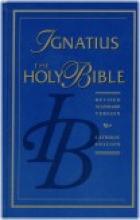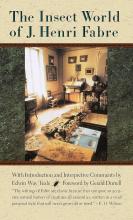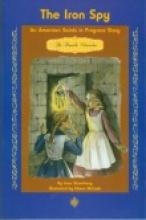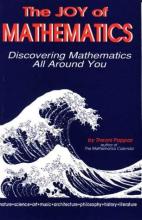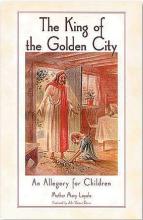No name
The Ignatius Bible
This is the best translation available in "modern" English (without the "thees" and "thous" found in the Douay Rheims translation). For many of us today, this language is more familiar and comfortable and is probably easier for small children to understand. We use both translations in our home and find this one a little better for reading aloud to the family. It does not contain the "feminized language" (a.k.a. "inclusive language") found in most of the modern translations of the Holy Bible. The feminized language found in most modern translations affects not only the beauty of the language, but even the subtle meanings of passages such as some Psalms where the "he" or "him" actually refers to Our Lord.
Sample Passages: Genesis 1: 1-3In the beginning God created the heavens and the earth. The earth was without form and void, and darkness was upon the face of the deep; and the Spirit of God was moving over the face of the waters. And God said, "Let there be light"; and there was light.
Psalm 27 (26): 1-2The Lord is my light and my salvation; whom shall I fear? The Lord is the stronghold of my life; of whom shall I be afraid? When evildoers assail me, uttering slanders against me, my adversaries and foes, they shall stumble and fall.
John 1: 1-5In the beginning was the Word, and the Word was with God, and the Word was God. He was in the beginning with God; all things were made through him, and without him was not anything made that was made. In him was life, and the life was the light of men. The light shines in the darkness, and the darkness has not overcome it.
Also available in softcover
Old Testament - 1005 pages, New Testament - 250 pages
Imprimatur 1966
The Insect World of J. Henri Fabre
Jean-Henri Fabre (1823-1915) was a French naturalist who penned many writings about his beloved insects. These essay/stories describe, in great detail, his encounters with some interesting insects – how he worked with them and what he discovered about them. For instance The material is informative and even humorous at times, but rather dense (definitely not dry!). Here is a sample, from "The Pine Processionary"...
You voracious little creatures, if I let you have your way, I should soon be robbed of the murmur of my once so leafy pines! Today I will seek compensation for all the trouble I have taken. Let us make a compact. You have a story to tell. Tell it me; and for a year, for two years or longer, until I know more or less all about it, I shall leave you undisturbed, even at the cost of lamentable suffering to the pines.
Although it might be suitable for high school students and could possibly be read aloud to younger students, it constitutes a portion of the Freshman Lab studies at Thomas Aquinas College. J. Henri Fabre is listed as one of the authors recommended in Catholic Authors: 4-Sight Edition.
A compilation of some of these stories, titled Fabre's Book of Insects is available from Emmanuel Books.
Copyrights 1949/1977
The Institute for Excellence in Writing
The Institute for Excellence in Writing, owned by a Catholic convert and home school father, teaches the "structure and style of writing" through live and video workshops. This program is used throughout Canada. As do other programs IEW teaches structure (organizing material for writing) so that the final written piece will be logical, but unlike most programs children are trained to do this by using the writings of good authors. The structure of writing is taught by having children read literature, outline the literature, narrate from their outline, then write their own piece. This eliminates the problem of what to write about and gives the child a "feel" for the flow of good writing. The first of the 5 videos shows the parent how to teach outlining and the beginnings of style. Style, that which makes for a sophisticated sentence as opposed to a "Dick and Jane" sentence, is not taught by most writing programs. IEW teaches style by providing children with a checklist of things that should be included in their writings. They are taught to include strong verbs, to change the part of speech with which they begin their sentences, to include clauses, and many other things all of which is taught in a systematic way which the child can easily grasp and remember because they have the checklist next to them. My children enjoy this program and have made great strides in their writing. This flexibility works in favor of individual differences, but figuring out a schedule was challenging at first. Unlike the Writing Strands program, IEW requires a good deal of parental involvement, especially in the beginning. The 5 video tapes can be rented for $80 or purchased for $130. While the initial outlay for IEW is more than other programs, it is the only one you need to teach writing through high school. This program teaches style and structure for: non-ficiton, critical essays (book reports), narratives, creative writing, writing from pictures, research reports. The IEW forces the child to write better sentences and use more descriptive words, which adults who read a lot tend to do naturally.
The Iron Spy
In this first book of the new series The Danville Chronicles, Joan Stromberg has found a fun and exciting way to teach faith to your children ten years and older. It will capture their imagination and keep their minds thinking.
This book takes place in the town of Danville, Pennsylvania in 1875. The biggest Iron Mill in town is owned by Mr. Graves. It has just exploded and Mary Mulhearn, an Irish immigrant, and her blind friend Kathleen Dodd are trying to find evidence that Mary's father, Mr. Mulhearn, is innocent of blowing up the Iron Mill and becoming a Molly Maguire. Although Mary's family knows he would never turn into a Molly Maguire and blow up the Iron Mill were he worked before it exploded, they also know that their realization of his innocence alone will not be enough to win the trial against Mr. Mulhearn.
Then one day, to make things more puzzling for Mary, a man who calls himself Sean McGinty shows up at Mary's door and says he is an immigrant right off a boat from Ireland and finds a place to stay at the Mulhearns' house. But Mary doesn't believe his story and is on his case. Mary and Kathleen go through adventures and trials, they find a detective book under a man's bed, they notice a ring that has shown up on two people, they spot a man in the town graveyard during the night, and they learn how to spy on a spy. They also have many more questions than answers at one point. Who is Sean really? Is he a Molly Maguire or is he on Mr. Graves' side? Who blew up the mill and why? If you want to know the answers to these questions and more and if Mary cracks the case and finds out whom Sean really is, you will have to read The Iron Spy for yourself.
What better kind of book could you ask for than a Catholic history mystery that will not let your mind wander or let your eyes drift from its thrilling pages?
The Jesse Tree
Set in the present day, an old woodcarver (who tends to grumpiness) is carving a wooden Jesse Tree for a church. Jesse Trees are an ancient traditional way of showing Jesus' lineage - from the start of the world, through Abraham, Jacob, Joseph, Daniel, David, Jonah, John the Baptist and finally to Mary and Joseph in a stable in Bethlehem. The old man is lovingly carving the figures and symbols representing each of 24 stories for the carved tree. The book opens just as he starts to carve the earth and moon, to represent God's creation. An inquisitive boy stops in the church and asks the ubiquitous question, "why"?
Through a series of 24 stories, the man slowly details the story of mankind - from the creation through the fall and right up to Jesus' birth. Each story has a different symbol and link to the Bible.
This book is beautifully told. The pictures are not spectacular, but at the head of each story, a small inset shows the symbol for the story. This makes it very easy to use this book as an Advent Calendar. That's what we're doing this year. In November, my younger children and I crafted the same 24 symbols, but we used oven-bake clay. We then made a cloth tree wall-hanging with 24 strings to attach these symbols. Starting December 1st, we read one story each night, attaching the appropriate symbol. On Christmas Eve we will attach the 24th symbol - the brightest star ever seen - heralding Jesus' birth.
This book, and our homemade Jesse Tree, will be a family tradition for years to come - a tradition that links the Old Testament to the New Testament - that links the first Adam and Eve to the new Adam (Jesus) and new Eve (Blessed Virgin Mary).
The Joy of Mathematics
This book is very good at what it does. However, you have to read the introduction to find out what it does. It is NOT a math textbook. And it is NOT a math program. You'd have to be a real geek to read it cover to cover. This is full of 1 (sometimes 2) page math things of all sorts. Little vignettes into the world of math. As such it introduces the reader to a number of things that he might not otherwise encounter. In fact, I am an engineer (lots'o'math) and I saw new and interesting things in here! Some of these are little games (answers in the back). Some are just fun to look at and ponder (many geometric things are this way). Some include little histories of a problem or mathematician.
What this book will probably do at some point is lead you to investigate some of these math ideas more deeply elsewhere. This is good! It sparks a good kind of excitement and wonder about math that everyone should be happy to experience now and then. Therefore, adult readers and capable children (decent readers but not necessarily good or enthusiastic about math) should both enjoy picking up this book a few times a week. For this reason this would be an excellent bathroom book.
The Killer Angels
This is really a rather remarkable novel about the battle of Gettysburg, Pennsylvania – probably the most famous battle of the Civil War. The Southern Armies, under General Lee, decided to invade the North in order to strike a blow that would "hit home" and make the Northerners wish to end the war. North and South met in the small farming town of Gettysburg in Pennsylvania and engaged in bloody battle for three days. The cost in human life was devastating to both sides. The defeat of the South at this battle seemed avoidable, but turned out to be decisive in the overall outcome of the war.
What is remarkable about this book is both the completeness of the picture we are given of the importance and complexity of the battle and the humanity of its key players. It is surprisingly unbiased toward either side, instead focusing on understanding the multitude of motivations that influenced the key players. The book contains twenty-three chapters. Each chapter tells a piece of the story from the point of view of different characters (a number of the characters have more than one chapter – four chapters are from General Lee's point of view, six chapters are from Colonel Chaberlain's point of view, etc.) The author seems to take special care in elaborating upon the South's General Longstreet and the North's Colonel Chamberlain.
High school students and adults will come away from this book with a much fuller sense of the gravity and scope of the civil war. It is intense, although not overly graphic and does contain some coarse language (which is both realistic and not overdone).
Note: The 1993 movie Gettysburg is based on this book and is quite good. It is remarkably non-gory without destroying the necessary sense of reality. I would recommend reading the book first as it provides some details not shown in the movie and makes it much easier to follow the multitude of characters. My one caveat is that I didn't care for the way General Lee was portrayed in the movie. They left out some important details that would have affected his admittedly poor decisions (namely his bad health) and in general, I found Martin Sheen's portrayal too buffoonish and undignified in contrast with the book.
The King of the Golden City
This is a simple, old-fashioned allegory about our relationship with Jesus and our journey to heaven (the "King" and the "Golden City"). The story is about a girl named Dilecta who struggles in the "Land of Exile" to keep her "hut" in order in order to be prepared for the King's visits, keep her "lamp" of peace burning brightly and control "Self", and listen to her "Prince Guardian" who helps to keep her out of the snatches of Malignus.
My daughter (2nd grader) enjoyed listening to the story and figuring out what each part of the story was trying to say in "real life". Sometimes children enjoy this sort of challenge of uncovering ideas that are somewhat hidden - working at the ideas can help to make them more meaningful.
This book covers a great deal of material in a simple manner - children are introduced to basic components of the spiritual life and encouraged to develop a strong relationship with our Lord through the Sacraments and a detachment from the things of this world.
This would make a nice religion supplement for young homeschooled children, but may be less appealing to those who have already been more exposed to today's culture.
Update: Over the years we have returned to this lovely book again and again (especially when we have a child preparing for First Communion) - and were delighted to be introduced to this new full-color edition with lovely old-fashioned illustrations and beautiful, glossy pages.
The King's Daughter
This engaging novel is centered around a young orphan from France, who is married off to a Canadian coureur de bois. The heroine, Jeanne Chatel, is spunky and determined to succeed in the wilds of 17th century Canada. There is considerable Catholic content in the novel. Jeanne is an orphan, and is raised by Catholic nuns in France. She travels to America with Saint Marguerite Bourgeoys, who went on to found schools and chapels, and started the Congregation of Notre Dame in Montreal, Quebec.
The novel has considerable historical content. We see the dangers faced by settlers in New France from Jeanne's eyes, as she struggles with raising her family and enduring the ever-present possibility of an Indian attack. Jeanne's husband is a coureur de bois, and we learn about this unique lifestyle. The book would be thoroughly enjoyed by girls, twelve and up. The author weaves a bit of romance through the story, and this would have high 'girl appeal'. It has an exciting plot, and would enhance any study of early Canadian history.

